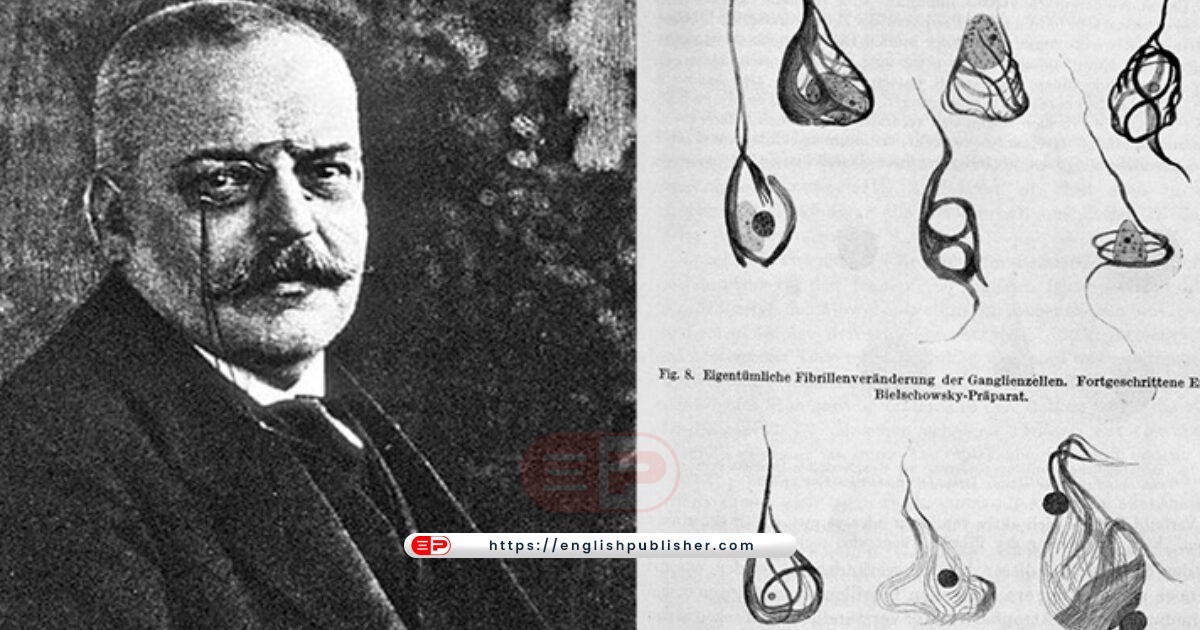The year 1901 was when neuropsychiatrist Alois Alzheimer met a patient whose diagnosis made him a well-known figure in the medical world. The patient’s name was Auguste Dieter.
Before the psychiatrist was a strange case that he had never seen before.
That woman was sitting on a bed in front of me. I asked his name. He answered Auguste. I asked the name of the husband? “I think Auguste,” he replied, as if he didn’t understand my question.
Memory loss, slurred speech, paranoia, unpredictable behavior and psychosocial disability were among the symptoms the 51-year-old German woman was experiencing.
Dr. Alzheimer observed him for a long time. He then diagnosed a disease that was unknown at the time, but today we know that it affects millions of people worldwide.
Dr. Alzheimer called it ‘the forgetting disease’.
The beginning
You too may have heard the word ‘Alzheimer’ many times in your life.
But there is also a good chance that you have never heard of the doctor who discovered the disease and gave it its name.
Alois Alzheimer was born on June 14, 1864 in a small town in Bavaria, Germany.
He studied medicine in Berlin, the capital of Germany, on his father’s wish. His father was a notary by profession.
In 1887, he returned to his hometown and completed his studies at the University of Würzburg.
He was interested in psychology, neuropathology and mental health education.
In the process of 23 years, after graduation, his services were hired to treat a woman who was suffering from mental problems.
He spent five months with this patient to fully understand her illness.
After this experience, he got an opportunity to work in a municipal hospital for mentally ill patients in Frankfurt, Germany.
At this hospital, he specialized in research on the cerebral cortex, the outermost layer of the brain.
In the same hospital, he met the famous neuropathologist Franz Nasl. They both worked in the same laboratory and became close friends.
Together, they conducted various investigations on patients suffering from mental health problems.
In 1894, Dr. Alzheimer married Nathalie Geisenheimer and they had three children. In 1902, Dr. Alzheimer’s wife died.
Meeting with Auguste Dieter
“At the time, Dr. Alzheimer was obsessed with the idea that psychiatric illnesses were like other illnesses,” says Konrad Maier, professor emeritus of psychiatry at Goethe University Frankfurt.
He believed that the same way the body gets other diseases, so do the diseases of the mind.
According to Konrad Meier, Dr. Alzheimer was looking for a patient to prove his theory.
It was then that he met Auguste Dieter. In 1901, Auguste began to experience mental problems. She used to forget things and would suddenly wake up in the night and scream, shout and cry for hours.
Konrad Myrer says that “Dr. Alzheimer said that this was the patient he was looking for as soon as he saw Auguste.”
He kept a detailed medical record of the patient who was discovered in 1990 by Konrad Meier and his team working at the same psychiatric hospital where Dr. Alzheimer had once been.
The psychiatrist wrote down all his questions and thoughts about the patient by hand.
He wrote that ‘I showed him a pencil, a pen, a wallet, a few keys, a diary and a cigarette and he identified these things perfectly.’
“When she was told to write her name, she would write Mrs and forget it and we would have to remind her of the rest of the word.”
“The patient is unable to continue writing and repeatedly says that I have forgotten.”
identity
Auguste spent five years in the hospital, at the end of which she had completely lost her mental balance. He died on 8th April 1906.
Konrad Meier points out that Auguste’s brain was examined in detail immediately after his death.
Alzheimer’s disease leaves traces that can be seen under a microscope.
The most important thing Dr. Alzheimer noticed in Auguste’s brain was that his cerebral cortex had shrunk compared to normal people.
He also observed a specific substance deposited on the brain, with the help of which he identified the disease.
“We still believe this is the cause of the disease,” says Konrad Meier.
Six months after Auguste’s death, Dr. Alzheimer presented details of the case at the annual meeting of the German Conference on Psychiatry.
He described Auguste’s symptoms and the severity of the disease, introducing the disease for the first time as a type of dementia and naming it ‘Alzheimer’ at the suggestion of a colleague.
He died in 1915 at the age of 51. Little did he know at the time that his discovery would one day change the lives of millions of people and lead to an international research effort.
Scientists appreciate him not only for identifying the disease but also for the research method with which he identified it. The same method is still used today to diagnose dementia.
